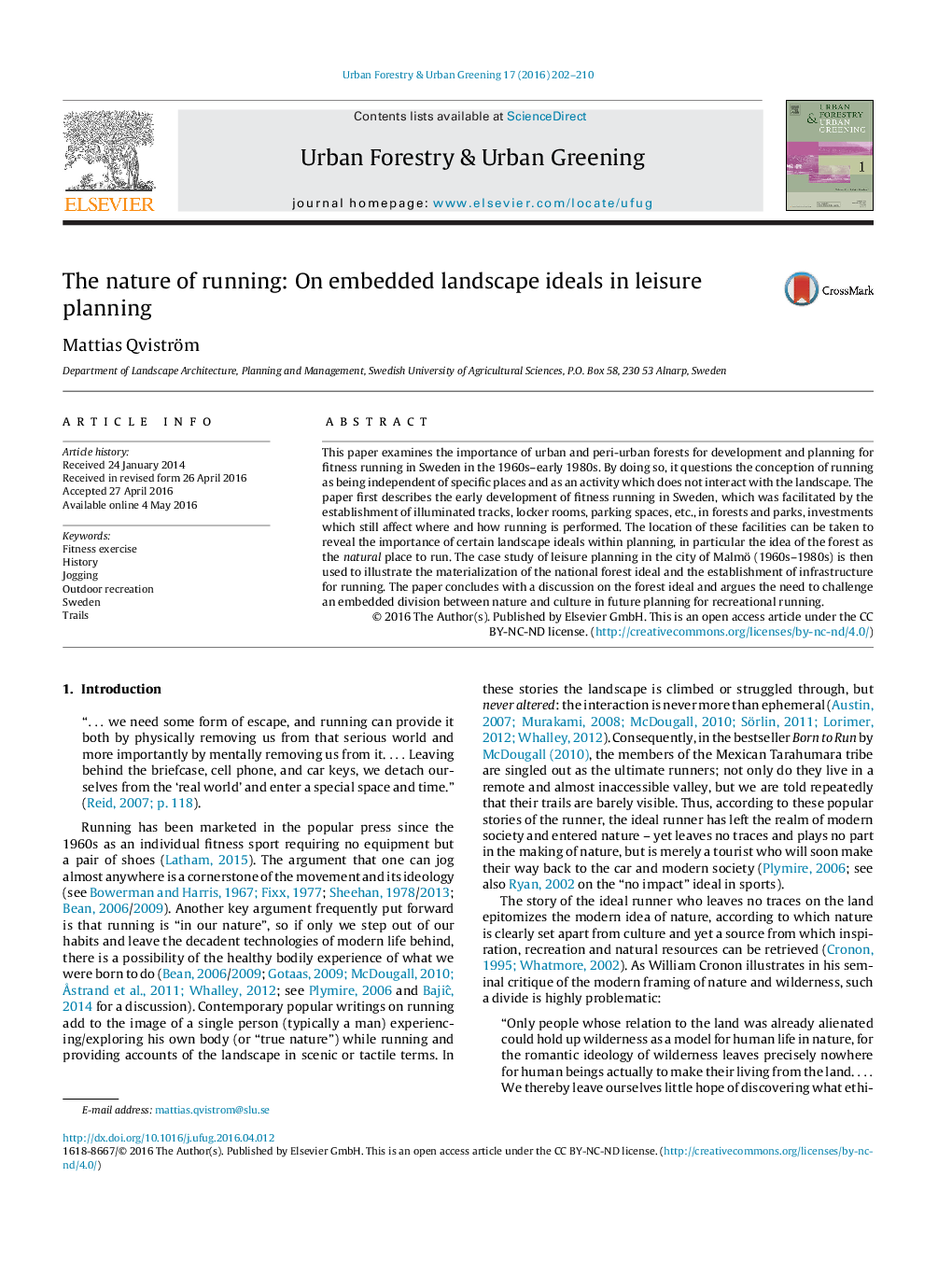| Article ID | Journal | Published Year | Pages | File Type |
|---|---|---|---|---|
| 6549671 | Urban Forestry & Urban Greening | 2016 | 9 Pages |
Abstract
This paper examines the importance of urban and peri-urban forests for development and planning for fitness running in Sweden in the 1960s-early 1980s. By doing so, it questions the conception of running as being independent of specific places and as an activity which does not interact with the landscape. The paper first describes the early development of fitness running in Sweden, which was facilitated by the establishment of illuminated tracks, locker rooms, parking spaces, etc., in forests and parks, investments which still affect where and how running is performed. The location of these facilities can be taken to reveal the importance of certain landscape ideals within planning, in particular the idea of the forest as the natural place to run. The case study of leisure planning in the city of Malmö (1960s-1980s) is then used to illustrate the materialization of the national forest ideal and the establishment of infrastructure for running. The paper concludes with a discussion on the forest ideal and argues the need to challenge an embedded division between nature and culture in future planning for recreational running.
Related Topics
Life Sciences
Agricultural and Biological Sciences
Forestry
Authors
Mattias Qviström,
